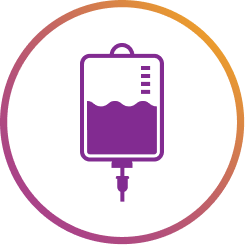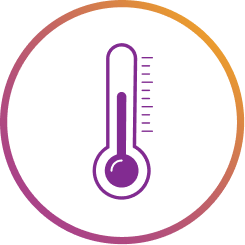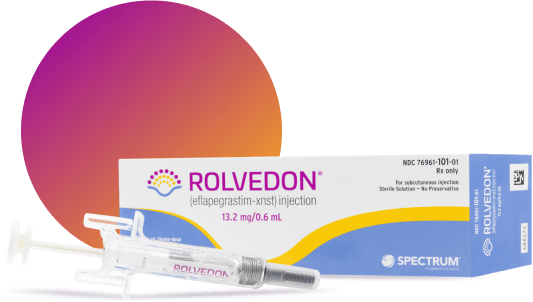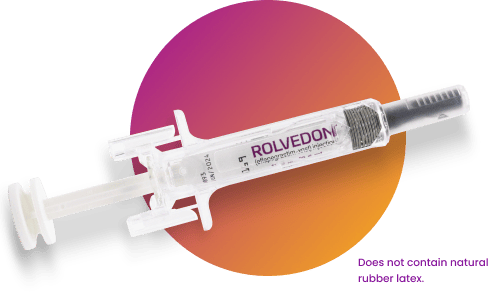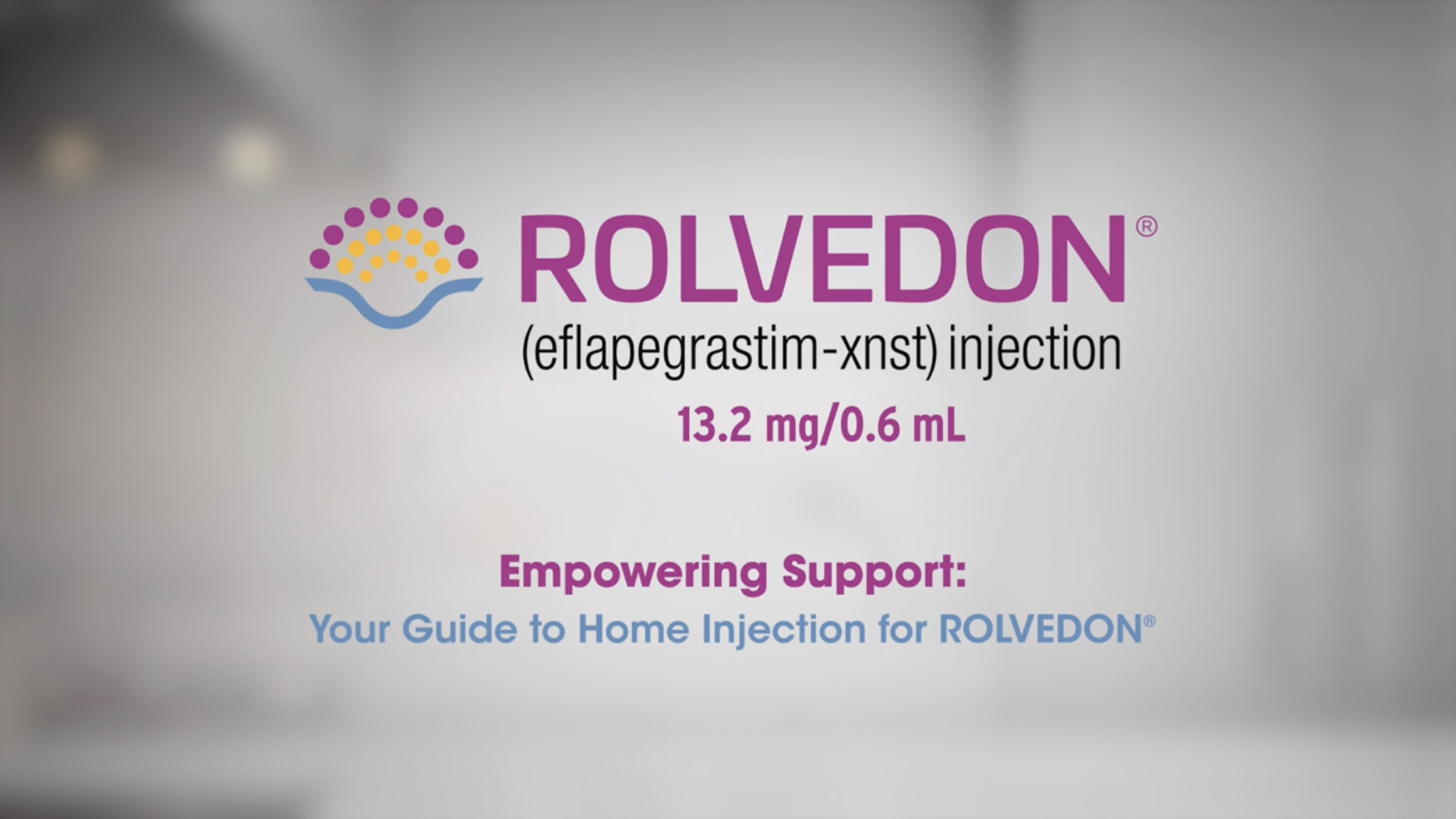What is ROLVEDON?
ROLVEDON is a man-made form of granulocyte colony-stimulating factor (G-CSF). G-CSF is a substance produced by the body. It stimulates the growth of neutrophils, a type of white blood cell important in the body’s fight against infection.
It is not known if ROLVEDON is safe and effective in children.
Important Safety Information
Do not take ROLVEDON if you have had a serious allergic reaction to eflapegrastim, pegfilgrastim or filgrastim products.
Before receiving ROLVEDON, tell your healthcare provider about all of your medical conditions, including if you:
- have a sickle cell disorder
- have kidney problems
- are pregnant or plan to become pregnant. It is not known if ROLVEDON can harm your unborn baby. Tell your healthcare provider right away if you become pregnant during treatment with ROLVEDON.
- are breastfeeding or plan to breastfeed. It is not known if ROLVEDON passes into your breast milk.
Tell your healthcare provider about all the medicines you take, including prescription and over-the-counter medicines, vitamins, and herbal supplements.
ROLVEDON may cause serious side effects, including:
- Spleen Rupture. Your spleen may become enlarged and can rupture. A ruptured spleen can cause death. Call your healthcare provider right away if you have pain in the left upper stomach-area or your left shoulder.
- A serious lung problem called Acute Respiratory Distress Syndrome (ARDS). Call your healthcare provider or get emergency help right away if you have shortness of breath with or without a fever, trouble breathing, or a fast rate of breathing.
- Serious allergic reactions. ROLVEDON can cause serious allergic reactions. These reactions can cause a rash all over your whole body, shortness of breath, wheezing, dizziness, swelling around your mouth or eyes, fast heart rate, and sweating. If you have any of these symptoms call your healthcare provider or get emergency medical help right away.
- Sickle cell crises. You may have a serious sickle cell crisis, which could lead to death, if you have a sickle cell disorder and receive ROLVEDON. Call your healthcare provider right away if you develop symptoms of sickle cell crisis such as pain or difficulty breathing.
- Kidney injury (glomerulonephritis). ROLVEDON can cause kidney injury. Call your healthcare provider right away if you develop any of the following symptoms:
- swelling of your face or ankles
- blood in your urine or dark colored urine
- you urinate less than usual
- Increased white blood cell count (leukocytosis). Your healthcare provider will check your blood count during treatment with ROLVEDON.
- Decreased platelet count (thrombocytopenia). Your healthcare provider will check your blood during treatment with ROLVEDON. Tell your healthcare provider if you have unusual bleeding or bruising during treatment with ROLVEDON. This could be a sign of decreased platelet counts, which may reduce the ability of your blood to clot.
- Capillary Leak Syndrome. ROLVEDON can cause fluid to leak from blood vessels into your body’s tissues. This condition is called “Capillary Leak Syndrome” (CLS). CLS can quickly cause you to have symptoms that may become life-threatening. Get emergency help right away if you develop any of the following symptoms:
- swelling or puffiness and are urinating less than usual
- trouble breathing
- swelling of your stomach area (abdomen) and feeling of fullness
- dizziness or feeling faint
- a general feeling of tiredness
- Myelodysplastic syndrome and acute myeloid leukemia. If you have breast cancer or lung cancer, when ROLVEDON is used with chemotherapy and radiation therapy, or with radiation therapy alone, you may have an increased risk of developing a precancerous blood condition called myelodysplastic syndrome (MDS) or a blood cancer called acute myeloid leukemia (AML). Symptoms of MDS and AML may include tiredness, fever, and easy bruising or bleeding. Call your healthcare provider if you develop these symptoms during treatment with ROLVEDON.
- Inflammation of the aorta (aortitis). Inflammation of the aorta (the large blood vessel which transports blood from the heart to the body) has been reported in patients who received pegfilgrastim products. Symptoms may include fever, abdominal pain, feeling tired, and back pain. Call your healthcare provider if you experience these symptoms.
The most common side effects of ROLVEDON include:
- tiredness
- nausea
- diarrhea
- bone pain
- headache
|
- fever
- anemia
- rash
- muscle and joint pain
- back pain
|
These are not all the possible side effects of ROLVEDON.
Call your doctor for medical advice about side effects. You may report side effects to FDA at 1-800-FDA-1088.

